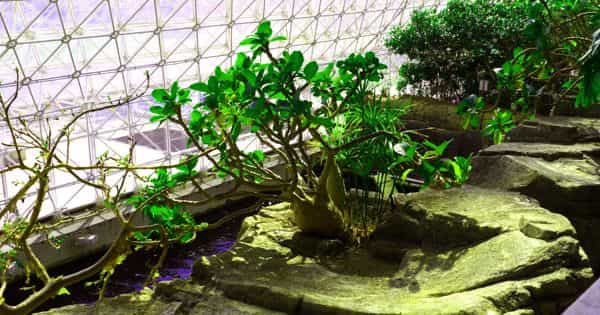Closed ecological systems (CES) are ecosystems that do not rely on matter exchange with any part outside the system. The notion of CES came into existence very soon after Ecology became established as natural science. Ecology is one of the newest established natural sciences, and one of the leading areas of research in this field relates to the potential for ecosystems and how to create closed ecological systems. The main purpose of a closed ecological system is to maintain life.
“A closed ecological system is best described as an ecosystem that does not rely on matter exchange with anything from outside of the system.”
The term is most often used to describe small manmade ecosystems. CES will help mankind not only to find and/or create new territories for its expansion but also to keep it’s present only nest safe and stable. A closed ecological system is best described as an ecosystem that does not rely on matter exchange with anything from outside of the system. Such systems are scientifically interesting and can potentially serve as a life support system during space flights, space stations, or space habitats. Within these systems, if waste products are produced by one species, then they must be used by another species.

In a closed ecological system, any waste products produced by one species must be used by at least one other species. The earth exists in a closed ecological system, a biosphere, an oasis in the hostile environment of space, which provides life support for humans and other biological creatures from algae to sweet potatoes. If the purpose is to maintain a life form, such as a mouse or a human, waste products such as carbon dioxide, feces and urine must eventually be converted into oxygen, food, and water. For example, urine, feces, and carbon dioxide must become water, food, and oxygen.
A closed ecological system must contain at least one autotrophic organism. It is probable that the final approach will be a combined one, but more knowledge has to be acquired on the exact behavior of each biological element taken separately and included in the studied CES. While both chemotrophic and phototrophic organisms are plausible, almost all closed ecological systems to date are based on a phototroph such as green algae.
Examples
A closed ecological system for an entire planet is called an ecosphere. For a closed ecological system to work, at least one autotrophic organism is needed. In a closed ecological system, the maintenance of life happens through complete re-use of available material by means of cycles. Exhaled carbon dioxide and other waste matter are renewed chemically or by photosynthesis into oxygen, water, and food.
Bottle gardens and aquarium ecospheres are partially or fully enclosed glass containers that are self-sustaining closed ecosystems that can be made or purchased. They can include tiny shrimp, algae, gravel, decorative shells, and gorgonian. Humans have already initiated the process of designing and building tightly sealed ecological test facilities and environments.
















